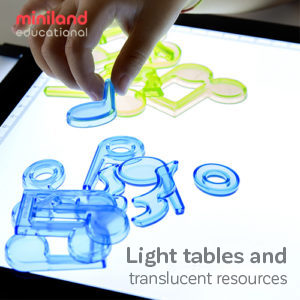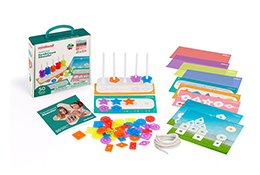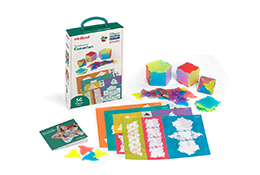How to make your students feel included (and happy!)
It’s the most wonderful, confusing, stressful TIME OF THE YEAR!!
Cookies everywhere, wrapping paper strewn about, and lesson plans that might as well be thrown in the trash since your little students are so filled with excitement, their attention span will be next to zero.
One of the biggest questions and stressors Teachers face around November and December is how to ensure that each child in their classroom feels seen and represented. You may ask yourself “do I have too many Christmas decorations up? Did I make sure Hanukkah was just as represented as Christmas? What about Kwanzaa? What other holiday may I be missing in my classroom? What’s the right thing to do here?”
Christmas is so universal that it basically envelops the entire winter season. But it’s not the only holiday on the map. For example, some holidays celebrated in December around the world include:
- Hanukkah
- Kwanzaa
- Diwali
- Lucia Day
- New Year
It can be daunting to figure out the right ways to celebrate and make sure each child is included, whatever their religion or ethnicity.
We’ve compiled a few suggestions to help you create a more inclusive classroom and navigate the next few weeks as winter break draws near…
Step 1: Ask your students!
Don’t know which holidays to include? Ask! Have the kids in your classroom tell you or write down (if they can) which holiday they celebrate at home during the season. Make a list of the holidays your students provide you with and let this be your foundation for your décor, games, food and more.
Step 2: Do your Research:
A simple Google search will help inspire you to find creative ways to bring the holidays into your classroom, whether it’s décor that stays up all month long or ideas for your holiday party! For example:
During Hanukkah, During Hanukkah, many Jews also eat special potato pancakes called latkes, sing songs, and spin a top called a dreidel to win chocolate coins, nuts, or raisins. Bring some dreidels to class and play the game. Ask your students if any of their parents would like to bring in some latkes or other snacks for the Classroom Holiday Party (we suggest avoiding the nuts 😉
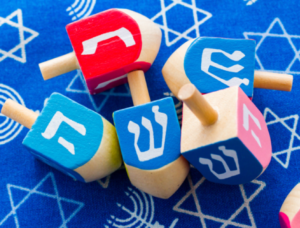
For Kwanzaa, you’ll likely already be on Winter Break as it starts from December 26 through January 1st but that doesn’t mean it can’t be celebrated along with the other holidays. According to Learning Lift Off.com Kwanzaa, which means “First Fruits,” is based on ancient African harvest festivals and celebrates ideals such as family life and unity. During this spiritual holiday, millions of African Americans dress in special clothes, decorate their homes with fruits and vegetables, and light a candle holder called a kinara.* Bringing fruits and vegetables to class for the students to munch on is a great way to tie-in this lovely holiday.
Step 3: Focus on Traditions
Though we know you do an excellent job of focusing on representation and inclusivity all year round, holiday celebrations are a great and simple way to help students learn about diversity from an excited space.
What better way to find out that in China, to celebrate the Chinese New Year, children dress in new clothes and people carry lanterns in a huge parade led by a silk dragon, the Chinese symbol of strength. Craft a Chinese Dragon Puppet together with the entire class so they can have a parade during your classroom celebration with their Dragon leading the way!
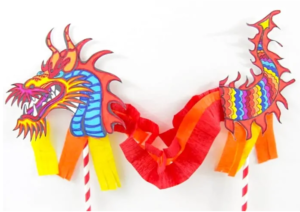
*Photo Credit: Made with Happy Blog
You can even ask parents to come into the classroom and talk about their family traditions and how they celebrate. This is a wonderful way to not only help that particular student feel their heritage/religion is important, but it also exposes your other students to traditions that may be different from their own.
Ask your students to dress in traditional outfits, whatever that may be, on the day of your classroom party. It could be traditional garb or it could be anything from dressing up, to dressing in Pajamas, to wearing an ugly Christmas sweat if that’s what that child’s family does. Anything to make them feel included and seen is the key.
Step 4: Play Games!
Find books on each holiday/religious observance that your students share with you and bring them into the classroom. Split your students up into even groups to read the book about a specific holiday. Then have them share some fun facts they learned with the rest of the class.
You can even incorporate fun games to help them about the different cultures through play.
For example, you could play Schokolade Essen, a German party game that means “chocolate eating” (yay Chocolate!!) or bring in a Pinata to hang in the classroom (OR BOTH!)*. We found a great article from Little Pim on how you can incorporate these games into your holiday festivities and a fantastic YouTube video from Tea Time with Tammie that breaks down how to play Schokolade Essen.

Step 5: Give Back!
December isn’t the only time of year to give gifts, but it’s a great place to get the ball rolling and encourage your students to give back all year round.
Use the season as a way to teach your students how important it is to think of others by helping them create things for those in need.
For instance, you can collect items for care packages to send to service members overseas through an organization like Soldier’s Angels. Send each student home with a list of items service members would need like:
- Snacks
- Sunblock
- Toiletries
- Socks
- First Aid Kit
- Magazines/Books
- Travel Games
- Notebooks and Pens
Then, ask them to bring in a shoe box to school. During your holiday party, create an assembly line where each child can decorate their shoe box and then put the supplies inside. Encourage them to create drawings or art work, even thank you notes, to put in their care package. You can then collect all the boxes and ship them to Soldier’s Angels to send off to deployed soldiers, veterans, caregivers, and families of service members in the US.
Step 6: Go with the Flow
You’ve done all you can, now let the children in your care enjoy. You may find that some may not even want to celebrate a holiday (maybe they don’t celebrate anything at home) and that’s ok too! The magic of inclusivity is respecting every ethnicity and religious observance or lack thereof.
Once party supplies, gifts and games are put away, sit back and relax during your much needed Winter Vacation.
Happy Holidays from all of us at Miniland!
